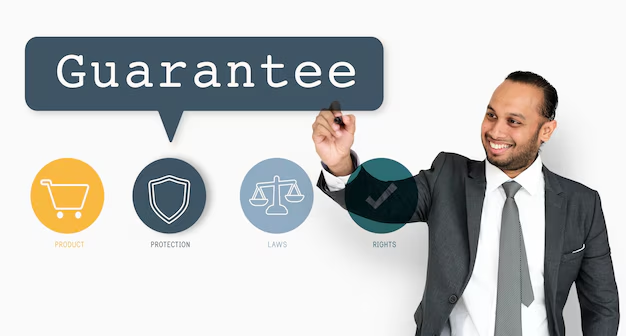Professional Liability Insurance
Introduction
Professional liability insurance, often referred to as errors and omissions (E&O) insurance, is a crucial safeguard for professionals who provide advice, services, or expertise. This type of insurance protects against claims of negligence, errors, or omissions that occur while performing professional duties. Whether you’re a consultant, healthcare provider, lawyer, or any other professional, having this insurance can prevent potentially devastating financial losses resulting from lawsuits or claims. This article explores the importance of professional liability insurance, the types of coverage available, key considerations when selecting a policy, and strategies for optimizing protection.
The Importance of Professional Liability Insurance
Protection Against Claims
Professional liability insurance provides financial protection against claims alleging that your professional services caused harm or financial loss to a client. These claims can arise from:
- Negligence: Accusations that you failed to meet the standard of care expected in your profession.
- Errors and Omissions: Claims that mistakes were made or important details were omitted in your professional work.
- Breach of Duty: Allegations that you did not fulfill your professional obligations or responsibilities.
Financial Security
The cost of defending yourself against a professional liability claim can be substantial, even if the allegations are unfounded. Professional liability insurance covers:
- Legal Defense Costs: Provides coverage for attorney fees, court costs, and other legal expenses incurred in defending against claims.
- Settlement Costs: Covers settlement amounts or damages awarded to the claimant if the claim is found to be valid.
- Judgment Costs: Includes costs associated with paying court-ordered judgments or settlements.
Without professional liability insurance, you may be personally liable for these expenses, which could have significant financial repercussions for you or your business.
Business Reputation
Having professional liability insurance can enhance your business’s credibility and reputation by demonstrating your commitment to managing risks and protecting clients. It can also be a requirement for:
- Client Contracts: Many clients or contracts may require proof of professional liability insurance before engaging in business.
- Regulatory Compliance: Certain professions and industries mandate professional liability insurance as part of regulatory or licensing requirements.

Types of Professional Liability Insurance Coverage
Professional liability insurance policies can vary based on the profession, coverage limits, and specific needs of the insured. Understanding these types of coverage is essential for selecting the right policy.
Errors and Omissions Insurance
Errors and omissions (E&O) insurance is a broad form of professional liability coverage that protects against claims of mistakes or inadequate performance in professional services. This includes:
- Professional Mistakes: Coverage for errors made while providing professional advice or services.
- Omissions: Protection for situations where important information or services were not provided.
Medical Malpractice Insurance
Medical malpractice insurance is a specialized form of professional liability insurance for healthcare providers. It covers claims related to:
- Medical Errors: Protection against claims of negligence in the provision of medical services.
- Patient Harm: Coverage for damages resulting from alleged harm caused to patients due to medical errors or omissions.
Legal Malpractice Insurance
Legal malpractice insurance is designed for legal professionals, such as attorneys and law firms. It covers claims related to:
- Legal Errors: Protection against allegations of mistakes or omissions in legal representation or advice.
- Breach of Duty: Coverage for claims alleging that the attorney failed to uphold their professional duties.
Technology Errors and Omissions Insurance
Technology errors and omissions insurance is tailored for technology professionals, such as IT consultants and software developers. It covers:
- Software and Technology Issues: Protection against claims related to errors or failures in technology products or services.
- Data Security Breaches: Coverage for claims arising from data breaches or security failures.
Architects and Engineers Professional Liability Insurance
This type of insurance is designed for architects, engineers, and other design professionals. It covers:
- Design Errors: Protection against claims related to mistakes or omissions in design work.
- Project Delays: Coverage for financial losses resulting from delays or errors in project execution.
Key Considerations When Selecting Professional Liability Insurance
Selecting the right professional liability insurance policy involves evaluating various factors to ensure comprehensive protection. Consider the following:
Assessing Coverage Needs
Identify the specific risks associated with your profession and determine the appropriate coverage limits:
- Risk Exposure: Evaluate the types of claims that are most likely in your profession and ensure coverage addresses these risks.
- Coverage Limits: Choose policy limits that adequately cover potential claims and associated costs.
- Deductibles: Review deductible amounts and consider whether they are manageable in relation to your financial situation.
Evaluating Policy Options
Professional liability insurance policies can vary in terms of coverage, exclusions, and terms. Carefully review policy options to ensure they meet your needs:
- Coverage Details: Examine the scope of coverage, including what is included and excluded.
- Claims-Made vs. Occurrence Policies: Determine whether the policy is claims-made (covering claims made during the policy period) or occurrence-based (covering claims arising from incidents during the policy period, regardless of when the claim is made).
- Policy Endorsements: Consider additional endorsements or riders that may enhance coverage.
Understanding Policy Terms and Conditions
Thoroughly review the terms and conditions of the policy to ensure you understand the coverage details:
- Exclusions: Identify any exclusions or limitations in the policy and assess how they may impact your coverage.
- Claims Process: Familiarize yourself with the process for filing claims, including required documentation and timelines.
- Renewal Terms: Review renewal terms and conditions to ensure continuous coverage and avoid lapses.
Working with an Insurance Broker
An insurance broker with expertise in professional liability insurance can provide valuable assistance in selecting the right policy:
- Expert Guidance: Brokers can help you assess your needs, compare policy options, and identify the best coverage for your profession.
- Customization: Brokers can assist in tailoring policies to meet your specific requirements and risk profile.
How to Optimize Professional Liability Insurance Protection
Having professional liability insurance is an important step, but there are additional actions you can take to maximize protection:
Maintain Accurate Records
Keep detailed and organized records related to your professional services:
- Documentation: Maintain records of your work, including client communications, contracts, and deliverables.
- Claims History: Keep a record of any past claims or incidents to track trends and identify areas for improvement.

Implement Risk Management Practices
Adopting risk management practices can help reduce the likelihood of claims and enhance your overall protection:
- Quality Assurance: Implement quality control processes to minimize errors and omissions in your professional work.
- Client Communication: Maintain clear and effective communication with clients to manage expectations and address potential issues early.
- Continuing Education: Stay updated on industry standards and best practices to ensure your services meet current professional standards.
Regularly Review and Update Coverage
Regularly review and update your professional liability insurance coverage to ensure it remains aligned with your evolving needs:
- Policy Adjustments: Adjust coverage limits or policy features as your business grows or your risk profile changes.
- Coverage Review: Periodically review your policy to ensure it provides adequate protection and meets any new regulatory or contractual requirements.
Real-Life Examples of Professional Liability Insurance in Action
Example 1: Consulting Error
A business consultant was sued for providing faulty advice that led to significant financial losses for a client. The professional liability insurance covered legal defense costs and the settlement amount, protecting the consultant from financial ruin.
Example 2: Medical Malpractice Claim
A physician faced a malpractice lawsuit alleging negligence in the treatment of a patient. The medical malpractice insurance provided coverage for legal fees and settlement costs, allowing the physician to focus on their practice and patient care.
Example 3: Technology Failure
An IT consultant was accused of causing a major data breach due to an error in their system design. The technology errors and omissions insurance covered the costs associated with the breach, including legal fees and compensation for affected clients.
Conclusion
Professional liability insurance is a vital component of risk management for professionals across various industries. It provides essential protection against claims of negligence, errors, or omissions, ensuring financial security and peace of mind. By understanding the types of coverage available, carefully evaluating policy options, and implementing effective risk management practices, you can safeguard your career or business against the potential financial impact of professional liability claims. Investing in professional liability insurance not only protects you from financial loss but also enhances your credibility and demonstrates your commitment to managing professional risks responsibly.